More than anything else, though, the reigning theme of the year seems to have been that of disappointment. LucasArts was shuttered by Disney, with over a hundred employees being laid off and games in development like Star Wars 1313 being cancelled. The Android-based Ouya console, after raising millions on Kickstarter, was released and then… failed to make much of an impression. SimCity - which looked incredible in screenshots and trailers - suffered from such a troubled launch and unprepared servers that even multiple patches have failed to make it playable. GTA Online fared no better. There was the whole Aliens: Colonial Marines debacle. The Wii U and the Vita have failed to find their footing. I still don’t know what to make of the 2DS.
And there were some huge, huge games released: Assassin’s Creed IV, Grand Theft Auto V, Call of Duty: Ghosts, Battlefield 4. I don’t play these games (I lack both the time and the interest), so I have little to no opinion on them. Same with games like Animal Crossing and Pokemon X\Y: major sellers on the 3DS that I am just not in the demographic for. Nevertheless, even I can’t deny the fact that the 3DS took the lead with releases like these, not to mention a solid showing of other supporting titles from Nintendo. The Wii U may be floundering, but Nintendo has made something of the 3DS as of 2013, and I commend them for it.
Below are the thirteen games that didn’t disappoint me, but may or may not have been big sellers. These are the games that I invested hours in, that I enjoyed the most, that did something new and interesting and did it well, or that just appealed to me more than the typical fare this year.
(Please bear in mind that I do not currently own a PS3, which skews this list slightly. I have briefly played The Last of Us and Ni No Kuni, both games that have ended up on other critics’ best of 2013 lists, but I haven’t played either of them enough to justify their inclusion here. Since I play mostly on either a PC or a 3DS, only games released for those platforms will be represented below).
Hit the jump to see the full list.
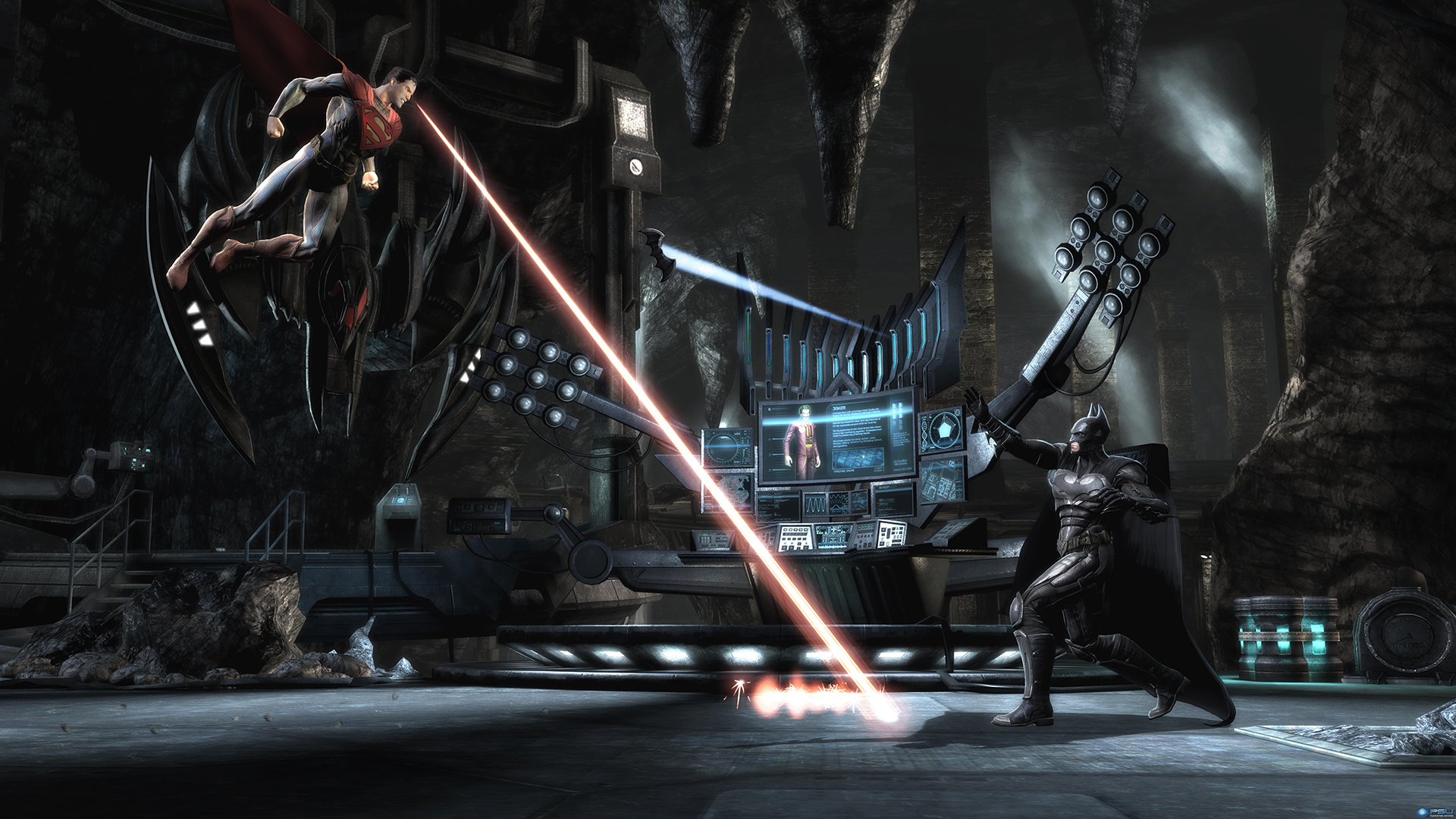
Injustice: Gods Among Us
(PC, PS3, PS4, Xbox 360, PS Vita, Wii U)
Once upon a time, I was pretty skilled when it came to fighting games. I was of the generation that was the perfect age of twelve or thirteen when Street Fighter II was released to arcades, and my youthful reflexes and pliant muscle memory were a perfect fit for a game where twitch and combo memorisation were key.
Those days are long behind me, and while I do enjoy the occasional round of SkullGirls or Super Smash Bros. Brawl, the fact of the matter is that fighters are a young man’s game. So I was not expecting to like, or succeed at, Injustice: Gods Among Us, nor did I think the story would offer much more than the standard “world warriors gathering for a fighting tournament” plotline.
Injustice: Gods Among Us manages to impress in a number of regards. To begin with, the story is more developed than it has any right to be (there’s a tie-in comic series which fleshes out the events of Injustice considerably, but while it’s outstanding and definitely worth reading, it’s not required to appreciate the game’s writing): essentially, without giving too much away, Superman suffers a catastrophic loss and, along with a number of established DC heroes and villains who side with him, begins to take a more decisive role towards humanity. Those who do not join him (including Batman) have generally very good reasons for doing so - whether they disagree with him morally or philosophically, or because his concept of a despotic utopia simply doesn’t jive with their worldview. It’s a fighting game where some legitimately mature and interesting questions are raised about why you’re fighting, and why these fights are worth having.
If that all sounds pretty heavy, it really is not. Injustice is, first and foremost, a seriously badass brawler. When the contenders are all (mostly) superpowered, it’s only reasonable to expect that you’re going to do a lot of damage to your opponents and your surroundings. Many of the fights are multi-stage, as the two fighters leave a path of destruction in their wake. It’s a big, loud, boisterous, blockbuster fighting game that has somehow managed to raise the stakes, as fighting games go.
But most of all, I was impressed with how balanced Injustice felt. It’s equally accessible to both seasoned and novice (or out-of-shape, as the case may be) fighting gamers, and is never overwhelming or overly difficult while at the same time offering a very deep combo list for each character. Few other fighting games manage to offer quite so much to beginners, which is a feat unto itself.
Injustice: Gods Among Us breathes new life into a venerable genre, and proves that you can do something, and say something, no matter what gaming metier you’re working within.

Bioshock Infinite
(PC, PS3, Xbox 360)
I’ve already said quite a lot about Bioshock Infinite, so I’ll try not to repeat myself. The fact of the matter is that, in a year of disappointments, Infinite was one game where the delivery and execution lived up to the promises. We expected much, and we received more than that.
There are a few reasons why Bioshock Infinite is not higher on this list. To begin with, while it introduced a couple of neat gimmicks (Skyhooks and Tears), neither of those elements were integrated as well as they could have been into the gameplay - Skyhooks, which were certainly necessary for a game in which cities float in the sky, resulted in rail-shooter sequences, while Tears only offered a minimal amount of added strategy in the midst of a gunfight - and, when you take those out, you’re left with a pretty standard, if polished, first-person shooter. That alone would not manage to win the game any accolades.
However, the true value of Bioshock Infinite was in how it incorporated these gameplay elements, specifically Tears, into its ongoing story and worldbuilding. Columbia is unlike any place I’ve ever visited, in a game or otherwise, with its turn-of-the-century aesthetics and values, built around equal measures of out-of-time science-fictional technology and heady, philosophical mysticism. There was never a single moment while playing that I wasn’t completely invested in the reality of the world. But while amazing worldbuilding can set the stage for a great story, taken on its own, it is static and non-progressive - a well-crafted world does not automatically equate to an engaging plot.
Bioshock Infinite understands this, and does not begin or end (literally or metaphorically) in Columbia. Booker and Elizabeth go on a journey together, and every step of that journey worked for me. Sometimes I would break away from the main path to explore the world that Zachary Comstock built, often purely for the joy of discovery and nothing more, but there was always another elaborate set piece or dramatic moment waiting around the next corner for me to get to.
Bioshock Infinite manages a near-perfect balance between structure and story, between player and character agency, and between design and gameplay. And while it did not have the OMGWTF plot twist of the original Bioshock, it went a different route, offering a more constructed, emotional and complex ending.
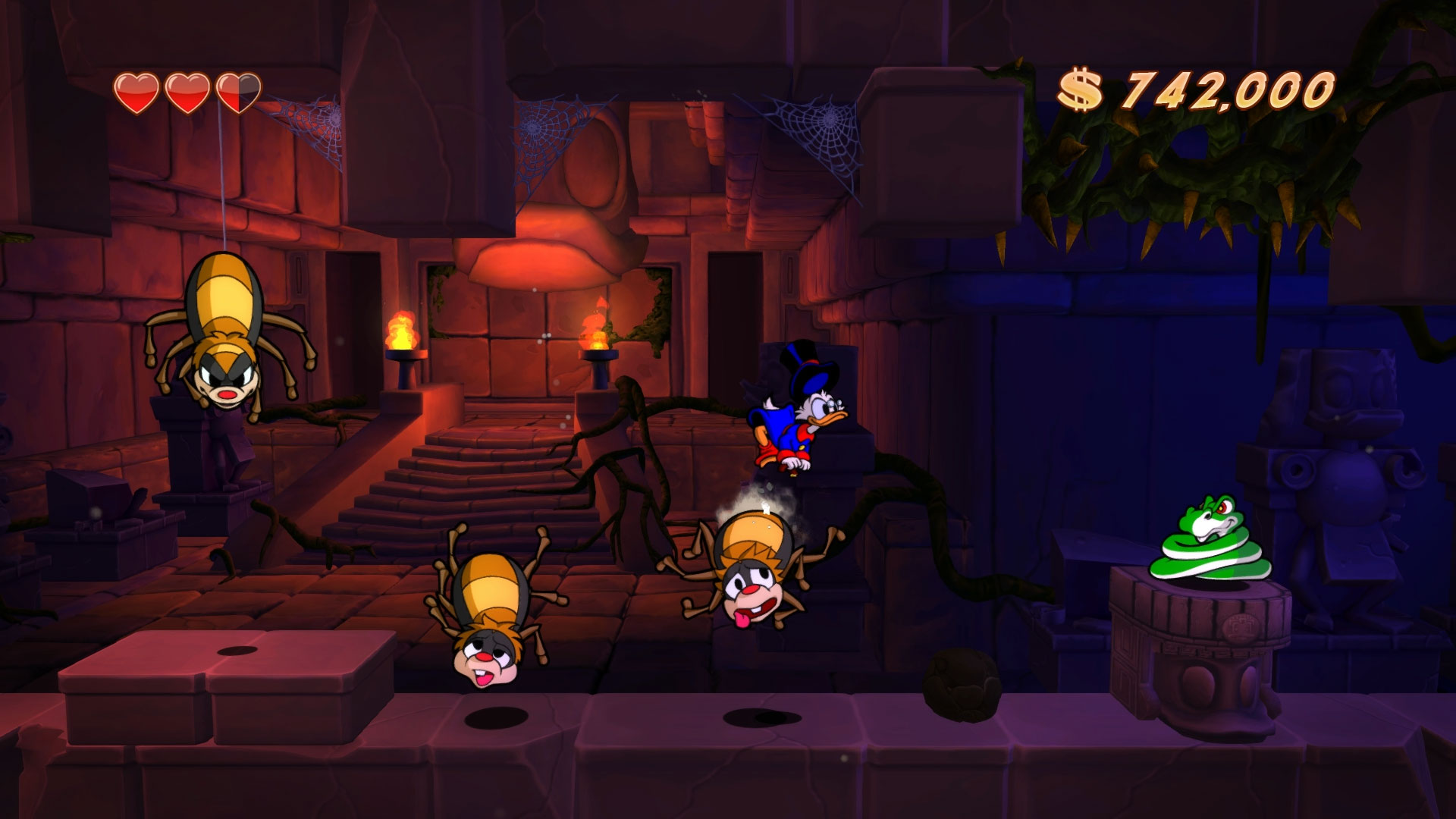
DuckTales: Remastered
(PC, PS3, Xbox 360, Wii U)
I suspect that there wasn’t another game this year that gave me so much unfettered, childlike glee as DuckTales: Remastered. It was such an obvious labor of love, from the redesigned sprites and backgrounds to the recomposed soundtrack to the fact that they were able to bring back the original voice actors from the cartoon for many of the characters to… literally everything. I am enamored of every single aspect of DuckTales: Remastered.
As a kid, there were certain Nintendo games that I played for hours on end. Some of them because they were so damn hard and I was nine so I had nothing better to do than to plug away at them, and some of them because they were just simply great games. DuckTales (and just about all of Capcom’s Disney tie-ins) fell into the latter category. It holds a special distinction for me personally, because it’s the first game I can remember ever beating.
Years later, I pulled it up in an emulator, but something about it was off: it didn’t live up to my memories, it was too hard to play with a modern-day gamepad, the music sounded tinny and simulated. I was disappointed, but put it down to the old saw, “you can never go back”. Nostalgia had overwritten reality. Maybe, I was forced to admit to myself, it had never been all that great a game to begin with, and only my stupid nine-year-old brain had thought it was because it didn’t know any better.
Well, as it turns out, I was absolutely and completely wrong. DuckTales: Remastered captures every nostalgic vibe promised by my memory of the original and amplifies them. Somehow, it manages to be a better game - a MUCH better game, frankly - than the emulated version. It’s even easier to play, despite literally the exact same controls, level design and enemy positioning.
Finally, taking nostalgia out of the mix, the redesign on character sprites, animations, and musical composition, not to mention the voice acting the cast brings to the mix, are all of such phenomenally high quality that I can’t help but be impressed. DuckTales: Remastered takes the high production standards of the original cartoon - standards which, at the time and to this day, Disney is renowned for - and applies them to a sidescrolling platformer game. There’s no fluff, not much in the way of ill-advised additions to the original, and no attempt to modernize anything. It very smartly relies on the strength of the original.
The funny thing is, I’m in the prime demographic for DuckTales: Remastered, and I’m not sure anyone who isn’t my exact age with my childhood experiences would appreciate it the way I do. Anyone under the age of, say, 30, who didn’t grow up watching the DuckTales cartoon and playing the NES DuckTales game would likely not really get what the big deal is. But for those of you who are, and who did, this game is one of the best things to happen all year.
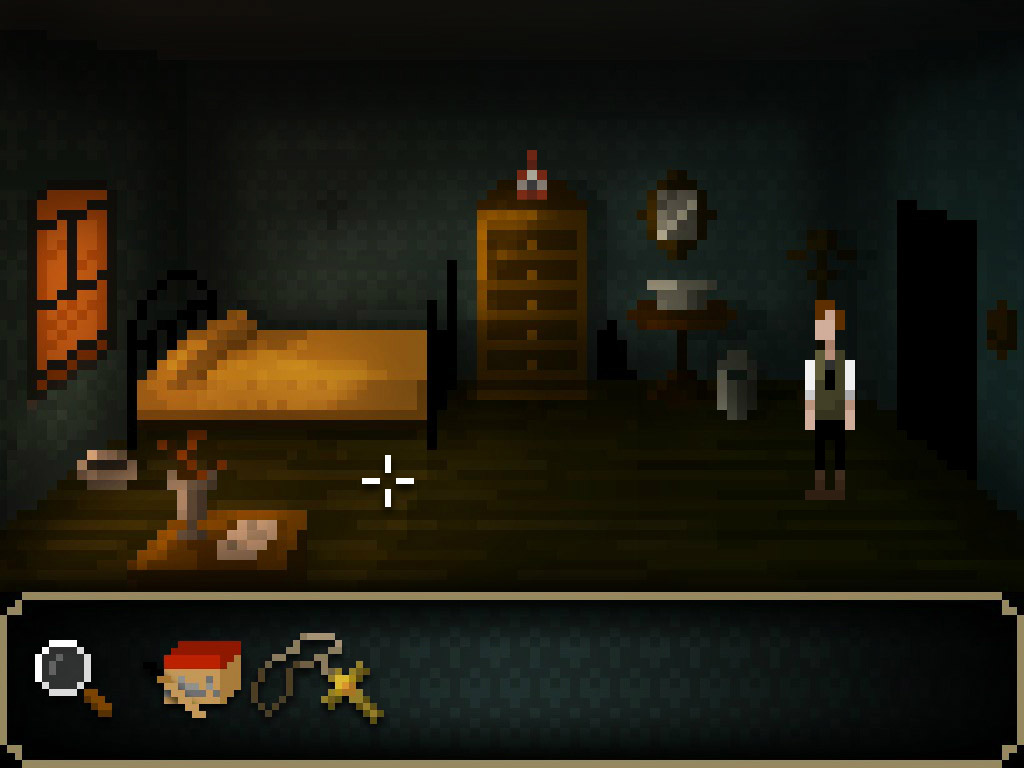
The Last Door
(Flash)
I first discovered the web-based adventure game The Last Door through, of all places, Patton Oswalt’s Twitter feed. I suppose it makes sense - Oswalt is, after all, a huge fan of Downton Abbey and Lovecraft, and is an inveterate nerd to boot - but I didn’t expect to come across something that would end up making my year-end list from an off-handed comment on a stand-up comedian’s feed.
The fact that this game has received virtually no attention is a crime. Perhaps it’s because it doesn’t fit into a commonplace and tradition game distribution model - although it was recently Greenlit on Steam, so that may change. Perhaps it’s because of the low-resolution pixel design, which some people are getting burned out on - unfairly, in my opinion. And perhaps it’s because the subculture of point-and-click adventure games in this day and age is so esoteric and underground that it would only really appeal to a very small percent of gamers, and few of those work in the videogame journalism or review industry, so it just got overlooked.
Whatever the reason, The Last Door is a great game with a fantastically creepy story. It’s miles away from the bright, cheery, humorous tone of a Space Quest or King’s Quest. Instead, it’s a dark and gothic take on interactive storytelling, an “adventure” only in the loosest sense, making use of a traditional point-and-click interface to propel its plot. Each episode in the game - there are three so far, with the fourth on the way - has constituted a self-contained ‘chapter’ in an ongoing larger arc. And it’s free, so there’s really no excuse for not playing it.
I would love to see more adventure games in the mainstream. It’s a style that is perfectly suited for certain types of stories, and while TellTale is doing some pretty amazing things these days with it in projects like Fables: The Wolf Among Us and The Walking Dead, there’s still a place on my hard drive (or in my browser) for more traditional adventure-game fare. If you haven’t played an adventure game since the days of Sierra and LucasArts, The Last Door is a great place to start. And if you are an aficionado of the genre, it’s a stylish, spooky and well-crafted entry, and easily the best that point-and-click had to offer in 2013.

Attack of the
Friday Monsters!:
A Tokyo Tale
(3DS)
Some of the games on this list are simply stand-out entries in their given genres, while some are here because they offer superlative stories or brilliant mechanics. Attack of the Friday Monsters, on the other hand, makes this list because it is hands-down the weirdest and most creative concept for a game that I came across this year.
In Attack of the Friday Monsters, giant kaiju attack the Japanese countryside every Friday. There’s no fake-out, no smug bait-and-switch… The game is exactly what it promises on the box, although not quite from the angle you might expect.
The game revolves around a young boy living in a small town in the countryside in the 1970s, as he interacts with the town’s residents and unravels the mystery of the kaiju (sort of). He can collect glowing gems called glims which are scattered around town, and collecting enough of a certain type unlocks cards, which he can use to battle other kids in the neighborhood. Running around, collecting glims, playing cards and taking on the occasional quest make up the bulk of the gameplay, but Attack of the Friday Monsters is about so much more. It’s about childhood: the made-up games and their arbitrary rules, the fantasies and obsessions, the friends and the bullies, the bickering parents and the indifferent neighbors.
Ultimately, it’s about a world which is literally, physically remade by children. It’s about the very fuzzy boundary between fantasy and reality when you’re a child, where adults will sometimes lie to you because it’s easier than a real explanation, and how difficult it is to differentiate between the two when you’re too young to know any better. It’s about growing up feeling safe, where even the giant monsters attack on a regular schedule and never do any lasting damage. It’s about the days being just packed.
There’s a strong correlation, in fact, between Attack of the Friday Monsters and Calvin & Hobbes, although this was probably not intentional. Both manage to capture the feeling of childhood without ever being pandering, and both place a high premium on imagination. The culmination of Attack of the Friday Monsters even starts to feel like a Spaceman Spiff strip, although with a heavy dose of psychedelia before the end.
If I have one complaint about Attack of the Friday Monsters, it’s that it’s way too short (I finished it it about 10 hours, and that was with every corner explored, every glim collected and every sidequest completed.) Regardless of its length, it’s encouraging to see this sort of unexpected, oddball offering cropping up in the 3DS eShop, and it gives me great hope for the future of the console.
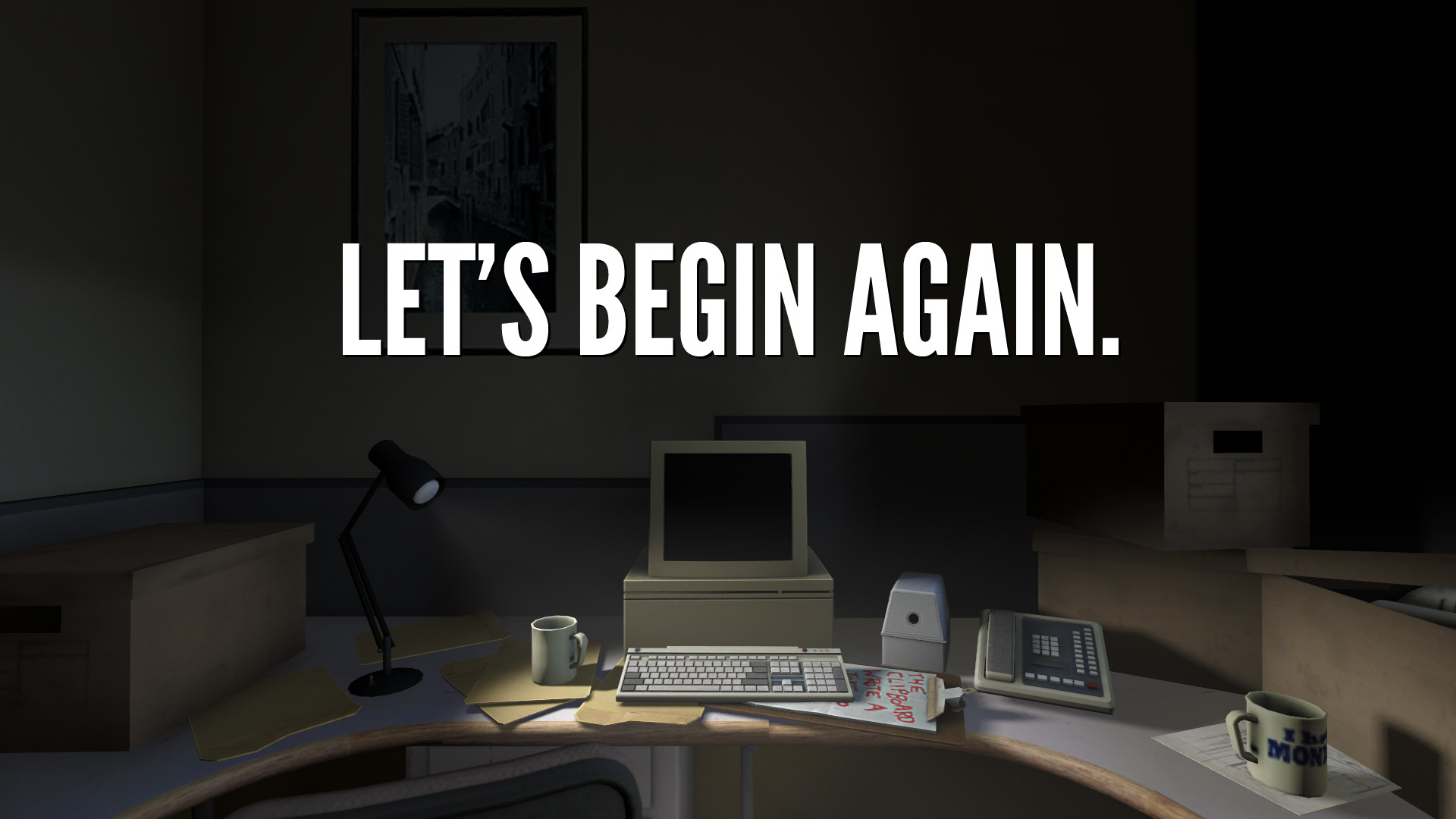
The Stanley Parable
(PC)
How does one even begin to describe The Stanley Parable? It is, in many ways, an anti-game, or at least a game where the mechanics and structure defy anything traditionally considered “play” in a gaming sense. Is it fun? Not particularly. But it’s one of the most interesting things I’ve played all year.
A first-person exploration game on paper, The Stanley Parable subverts all sorts of common elements of the genre to create something entirely new. As you wend your way through an abandoned office building, an unseen narrator offers wry commentary, along with occasional irritation if you do not behave in the way that he is describing. The map, so to speak, is relatively small, and a typical play-through can be completed in under half an hour. However.
The vocabulary and terminology of regular, run-of-the-mill games, even the more experimental exploratory games like Dear Esther or Gone Home (which appears later on this list), fail when applied to The Stanley Parable. The reason for this is that you, as the player, don’t really discover the purpose of it until at least one completion, beginning to end. The Stanley Parable is designed to be played through multiple times, taking different routes or making different choices each time, and there is no one true “ending” to it. As the eponymous Stanley, you never really discover what happened to your coworkers, or the purpose of the huge “Mind Control Facility” in the basement. You escape from the building and are thrust into the realm behind the curtain, so to speak, filled with articles and game asset models and sound effect banks and so forth, and then you are given the option to start again. The Stanley Parable is intended to be played as an endless loop, and there is really no way to win in the end.
What makes The Stanley Parable so fascinating is how it comments on the established narrative structure of videogames. In a typical game, you are propelled from point to point to point, and even the most open of sandbox games will jump back on track, narratively, once you hit certain markers. The only choices given to you are how long you choose to take before hitting that marker, and if you will continue to play the game at all (choosing not to choose is still a choice). The Stanley Parable addresses this by sometimes refusing to move the story along when you hit that mark (I spent at least fifteen minutes racing through the same repetitive basement hallway as the narrator rambled on about how I was probably losing my mind), or by indicating, but not forcing you to take, a preferred path (and snarking at you all the while), or by ultimately forcing you to quit out of boredom, after you realize that the entire thing is an endless feedback loop.
That something like The Stanley Parable exists at all is incredible. It’s both humorous and alienating, mysterious and banal, and is clearly the work of someone more intent on expression than sales. We live in a world of GTA Vs and Assassin Creed IVs, so the fact that the tools and the channels of visibility are available for a gem like The Stanley Parable to be created is profoundly reassuring. Not only can videogames be art, but they can explore entirely new paradigms which would not have been possible in other media.

The Cave
(PC, PS3, Xbox 360, Wii U, Linux, iOS, Android)
Ron Gilbert, as you may know, was one of the lead designers at LucasArts, and is the man responsible for bringing us classics like Maniac Mansion, Day of the Tentacle and Monkey Island. Tim Schafer also started at LucasArts, ported Maniac Mansion to the NES, worked with Gilbert on Day of the Tentacle and Monkey Island, and was a project leader on both Full Throttle and Grim Fandango. Schafer subsequently founded Double Fine Productions, the studio behind Psychonauts, Costume Quest and Stacking, and in 2010 hired his old pal Ron Gilbert on with the intention of designing a new adventure game.
My point here is that a new game from Ron Gilbert and Tim Schafer is cause for celebration. Or, at very least, heightened expectations and anticipation.
Those of us who grew up on LucasArts games - Maniac Mansion and its sequel, in particular - will feel right at home with The Cave. Almost all of the puzzles build on the foundation that Maniac Mansion and Day of the Tentacle first established: three concurrent playable characters, selected from a larger cast and each offering their own abilities, are required to perform certain tasks simultaneously.
Of course, there’s a heavy dose of Gilbert weirdness present. The character roster includes a Hillbilly, a Time Traveller and creepy Twins, amongst others. You’ll visit a subterranean Carnival, an underground Castle, and even a haunted mansion. And The Cave itself narrates the entire venture (not unlike the narrator of The Stanley Parable, or that of Bastion), and is a character in its own right.
So it’s delightfully strange and has a respectable pedigree. More than that, though, It’s also an exceptionally fun play. Exploring the cavernous depths of The Cave is a novel experience in its own right, and the puzzles, while occasionally difficult, are never a sticking point and never a chore, thanks to some remarkably clever design. And while there is a story of sorts (I think), the narrative is not the point: rather, The Cave is about putting tiny little people into various positions around the level and making them work together to achieve a goal.
The Cave is a very minimalist and simple game. There’s no inventory (each character can hold one thing at a time), no cut-scenes, no imposed exposition or info dumps. There are some collectible items to hunt for and a few extras to unlock, but for the most part, the puzzles are the focus. That’s very refreshing, in this day and age of submenus within submenus and extreme character customization and rare item crafting. Not that there’s anything wrong with games with that type of complexity, but sometimes you just want to spend fifteen minutes finding a solution to a stumper. That’s what The Cave offers, in a style that is both contemporary (the visual design of The Cave is outstanding) and heartwarmingly classic.

Gunpoint
(PC)
There are a lot of reasons to like Gunpoint, but for me, what it boils down to is this: Tom Francis, Gunpoint’s designer, basically conceived of and built the entire thing on his own over the course of three years. Sure, he recruited graphic artists and musicians to complete the final project, but this is, for all intents and purposes, the work of one guy.
It has always been my impression that making an appealing, functional game, even a fairly simple one, requires a team of dedicated and talented individuals. It’s not really a medium for auteurs, in other words (although those do exist, typically in the Jonathan Blow-Phil Fish lead designer mold). And while Gunpoint hardly suffers from the kind of singular pretension that a game like Braid had in spades, it clearly reflects the vision, not to mention the sense of humor, of a single person.
Gunpoint is a pretty funny game. The humor is not the point, and when you’re actually playing through the levels, there’s nothing really funny about it at all, but there is a certain jokey tone to the larger narrative of the game. Freelance spy Richard Conway is framed for murder and sets out to clear his name, taking on side missions along the way from potential clients. These missions are typically accepted after a brief discussion over text, and Conway is immediately shown to be a snarky, sarcastic, Deadpool-type who runs his mouth off and gets onto people’s bad sides - or just confuses the hell out of them. These exchanges feel like a reward for getting through each mission successfully.
Of course, the flip side to this are the missions themselves, and this is where Gunpoint really shines. Each mission takes place in a single building, presented in cutaway view and populated by guards and security cameras. Conway is tasked with breaking in and hacking computers, locating incriminating evidence, destroying video footage, and other unsavory acts; to do so, he must avoid alerting security in the building.
Conway is provided with certain unique tools to accomplish this. Notable amongst these is the Crosslink device, which, when enabled, shows the building in “blueprint” mode (not dissimilar to Batman: Arkham Asylum\City\Origins “Detective Vision” mode) and allows him to remotely rewire objects. What this means is that you can connect a distant security camera with a nearby light switch, enabling you to turn it off; connect an elevator call button with a live electrical current, allowing you to knock out guards without killing them; or construct elaborate traps for guards, luring them into a room and then locking the door behind them. There’s a great deal of freedom offered by Crosslink, and no one right way to complete a mission.
Gunpoint is equal parts stealth and sandbox problem-solving, and requires a considerable amount of strategy to complete. It’s definitely on the short side, but given the open-ended play style and a pretty substantial level editor, the replay value is definitely high. And Conway himself is a very appealing protagonist, an antidote to the super-serious badass that features in so many games in the past, in that he’s flippant and unconcerned even when he’s being framed for a crime he didn’t commit. The fact that he will commit many, many crimes over the course of Gunpoint, up to and including straight-up murder, is a sort of ironic fringe benefit. The point is, he didn’t commit THAT PARTICULAR CRIME, and he’ll be damned if he doesn’t clear his name.
Gunpoint is worth playing, is what I’m saying. It’s a rare beast, in that it’s funny without being a “comedy” game, does what it sets out to do extremely well, and is all the more impressive because it was the conceit of one person.
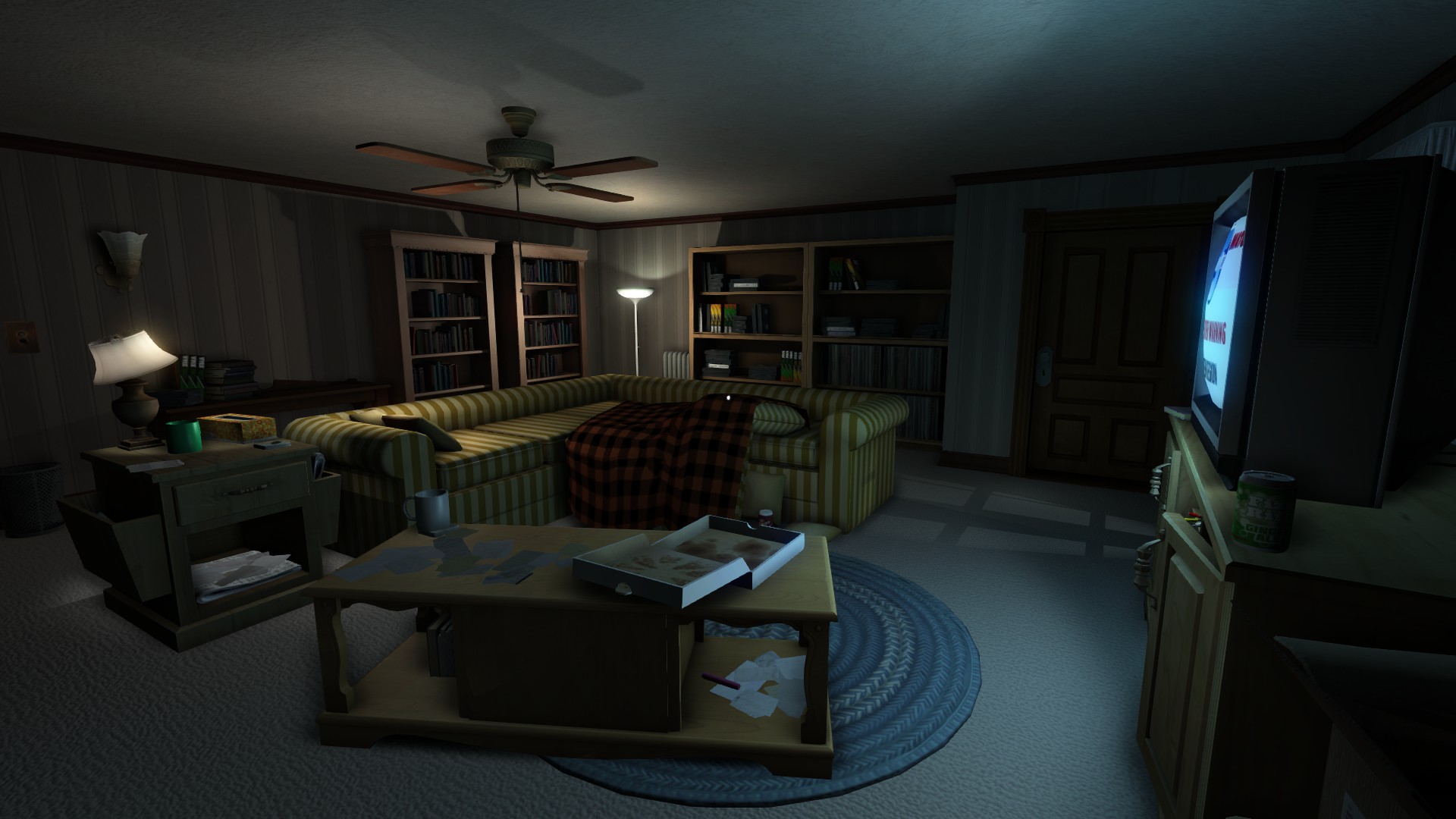
Gone Home
(PC)
Most games start out with the same hook, whether or not this is explicitly stated: the lone hero enters an unfamiliar realm where they are confronted by enemies or obstacles which they must overcome. They must develop in terms of abilities or weapons or experience or skills as those obstacles become increasingly more difficult, and they have a clear end goal - rescue the princess, save the earth from alien invaders, defeat the big boss. While these elements may be translated differently depending on the genre, they’re fairly universal, from RPGs to platformers to survival horror. The only difference with survival horror games is that resources are more scarce, the obstacles are intentionally harder to detect, and the ultimate end goal is simply to stay alive.
Gone Home is not survival horror, of course, but it makes use of many of that genre’s design tropes (not surprising, given that it was prototyped using Amnesia: The Dark Descent’s HPL 2 Engine). It takes place in a darkened, mysteriously abandoned mansion. In many places, the only sound is your footsteps. Clues come in the form of scrawled letters and notes. If you go into Gone Home with no prior knowledge, you will - as I did - spend the first hour of it waiting for the other shoe to drop.
But that isn’t the point of Gone Home. There are no monsters stalking you in the dark. There’s no running, no hiding, no sneaking around. In fact, as the game goes on, you come to realize that this house, your childhood home, is inhabited not by demonic entities or evil creatures but by the ghosts of a troubled family history.
Gone Home is all the more effective for how grounded, how real and how sincere its story is. Without giving too much away, it’s about being an outside observer to a genuinely problematic relationship between a sibling and your parents as it moves from deception to denial to rejection. It’s about a search for identity, about the rebellion of teenagers, about looking at the preceding generation and deciding not to follow in their footsteps. Gone Home has a lot to say, and much of what it says has never before been discussed in videogame format.
It’s such an unusual experience that I can’t help but wonder how it would have played out as a film, or a novel, or a comic book. It certainly would have had a different tone, by necessity. But it’s not any of those things, and the fact that the narrative is consumed from a first-person perspective - a perspective that we traditionally associate with agency, with pushing buttons or shooting guns or solving puzzles - means that it is able to make a vivid and novel impression.
There are stories that can be told using the medium of videogames, and then there are stories that can only be told through videogames. I would argue that the story that Gone Home relates could only have been expressed through this medium. And now that I’ve played it and experienced it, I look forward to not only what designers The Fullbright Company come up with next, but also to what those inspired by Gone Home are able to offer us in the years to come.
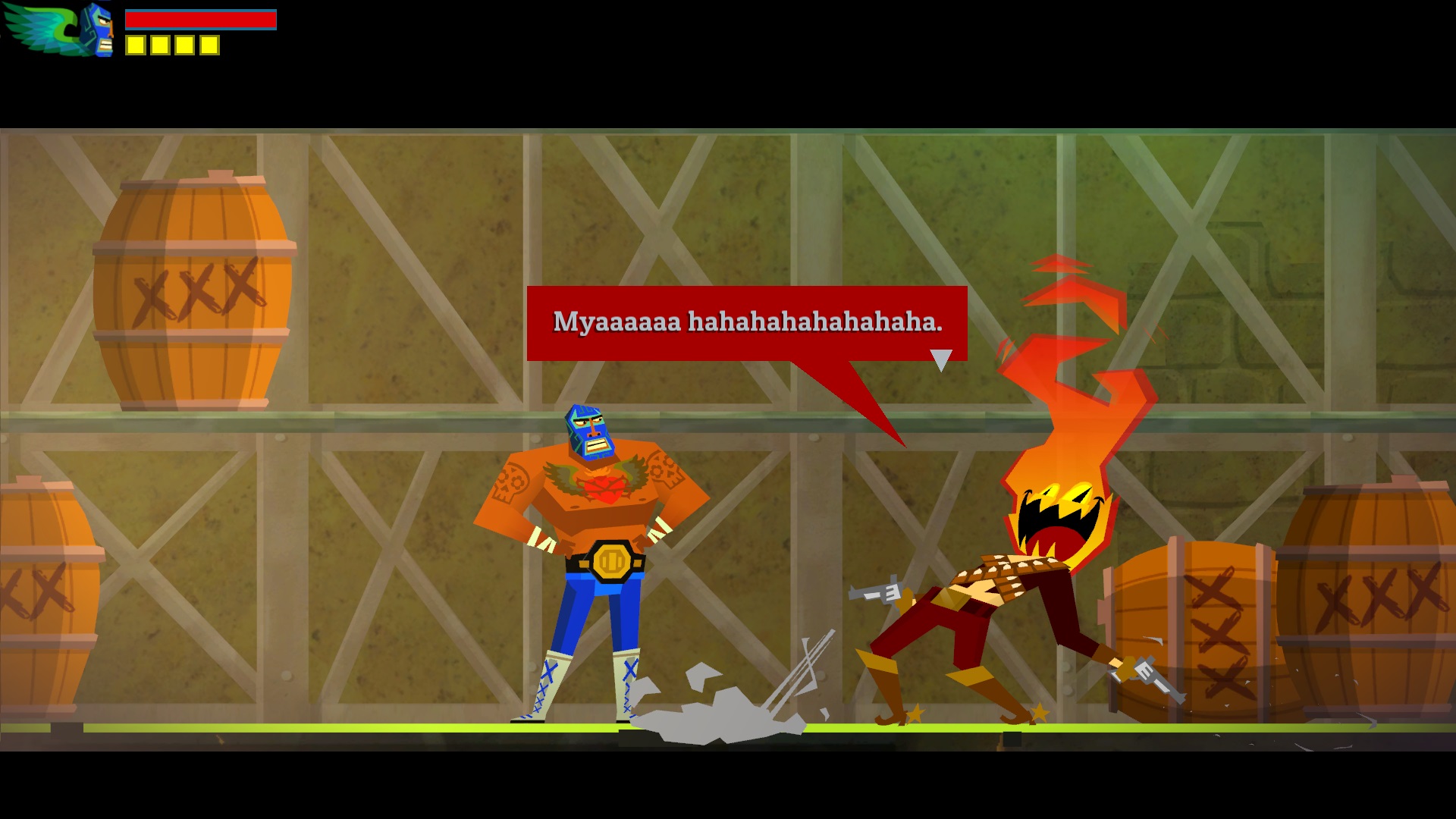
Guacamelee!
Gold Edition
(PC, PS3, PS4, PS Vita, Xbox One)
What are you looking for in a game? What makes or breaks your interest, compels you to keep playing, impresses the hell out of you, or convinces you to recommend it to all of your friends?
That’s a very loaded and open-ended question and I realize that there’s no right answer. Some people exclusively play within a single genre - they buy every sports game, or every FPS, or every JRPG, and anything outside of that doesn’t warrant much attention. Some people are mainly interested in the triple-A blockbuster games. Some people look for an attention to detail. Others are more interested in a great story, compelling gameplay, or familiar characters.
For me, I’m drawn to novelty, and that’s something that Guacamelee has in spades. It’s a new take on an old approach, a Metroidvania platformer with a heavy beat-’em-up combat element, but every single aspect of the game is brilliantly conceived and executed. Instead of weapons, you unlock moves which are activated through fighting-game-style button combos; those moves are equally applicable in both combat and puzzle-solving contexts. New characters can be unlocked, each with their own set of moves. There’s a Living\Dead World dimension swap, which has both narrative and puzzle-solving functions. The whole thing is based on luchadore and traditional Mexican culture and folklore, which is not something you see in videogames very frequently. And best of all, the game has a serious sense of humor about itself.
Guacamelee loves itself some memes and references (listing them all here would take too much time, but Kotaku has a collection of some of the best ones here), but more importantly, it wears its influences proudly on its sleeve. Everything from Metroid to Grim Fandango receive tongue-in-cheek credit. Guacamelee is certainly not subtle, but it goes for the gusto in every single aspect, much like its lusty luchadores. I can’t think of another game this year that had so much life to it.
The other thing I look for in a game is how well it’s been put together. The quality of the execution. Guacamelee may not necessarily look it on the surface, but man, this is a well-made game. Everything from the music to the visual design to the story show the level of thought, care and consideration put into this game. It’s a testament to the dedication of Drinkbox Studios that everything in Guacamelee works perfectly, both mechanically and in the sense of adhering to its theme.
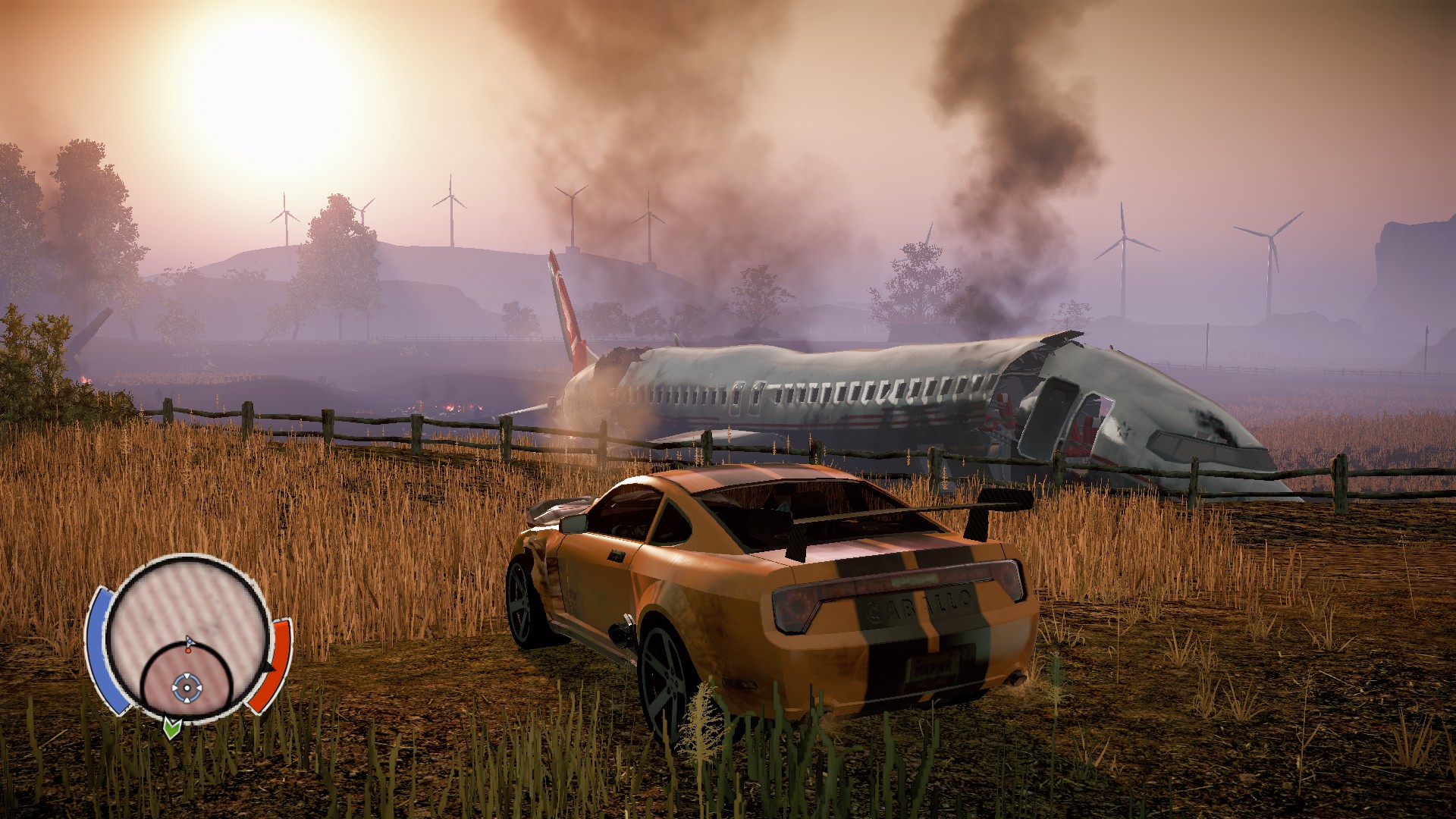
State of Decay
(PC, Xbox 360)
It’s difficult to describe State of Decay to someone who’s never played it, so I’d like to start by describing my experience with the game last night.
Ed had been bitten by one of those things and no one in the house trusted us, being newcomers and all. Given that medical supplies were running low, I (as Marcus) offered to kill two birds with one stone and go scouting for more: not only would a replenished supply mean that Ed would receive the treatment he needed, but it would earn me some brownie points with everyone else and maybe someone would be willing to watch my back on my next run.
There was a cell tower on the other side of town that would be tall enough to survey the area and pinpoint likely supply caches (presuming that they hadn’t been depleted by anyone else), so that seemed like a good place to start. I jumped in my pickup truck - the door had been ripped off by a persistent zombie on the drive here, but it still ran okay - and headed out to the tower.
Once I’d ascended the tower, it only took me a few minutes to spot a vet clinic a few blocks away. I also spotted two hordes between myself and the clinic, so I decided it might be prudent to head back to the house and try and convince someone to join me. Getting back to the house was no problem, but the only person who would even consider being my backup was Maya, and she had food poisoning so she was looking a little ragged. Nevertheless, I was about to talk her into riding along.
At this point, I took a closer look at my truck, and realized that it was pretty unlikely that it would get me to the clinic and back without falling apart on me. Since Maya wasn’t really in any shape to run for miles, I decided to scrounge up another vehicle. There was a Trans-Am in pretty good condition only a few blocks away, so I formulated a plan: I’d drive the truck out there, jump out, hotwire the Trans-Am, head back for Maya, and then we could go to the clinic. Pretty straightforward, right?
It wasn’t until too late that I realized my error. The two hordes I’d noticed earlier had converged into a single horde, and they had heard my truck when I was driving away from the tower earlier. Slowly but steadily, they had changed direction en masse - like a flock of birds - without my noticing.
I made it to the Trans-Am and got out. There were only a couple of zombies in the area, so I pulled out my .45 and fired off two headshots before jumping in the car. What I didn’t know - COULDN’T know - was that those two zombies were outliers for the horde, and as soon as they heard gunshots, they came running. Before I knew it, they were literally tearing the car apart to get at me. They dragged me out and that was it. Marcus was dead.
Because Marcus was dead, Ed died, and Maya lost influence points with the group. And they didn’t get any much-needed medical supplies.
That right there was fifteen minutes of State of Decay. I’ve played it for about six hours in total so far, and every second of it has been like that, with the exception of Marcus dying. I’d invested a lot in him by that point, so I tried to restore from an earlier point, but no go: in State of Decay, dying in permanent. Sure, you can pick up with a different character, but dead is dead and there’s no going back. One wrong turn and that’s it.
That might sounds depressing. It is. It’s also incredible. State of Decay is a zombie apocalypse simulator, in that it’s more about surviving than just going on an undead kill spree. It’s the closest I’ve ever come to experiencing the world of The Walking Dead (and that includes Telltale’s Walking Dead games, if I may be forgiven for saying so).
What makes the strongest impression about State of Decay is that it takes what could have been a very run-of-the-mill survival horror game and, by emphasizing the “survival” part, ends up doing something totally new and unexpected. We’ve all played games like Resident Evil and Silent Hill where you have to conserve ammo and sneak through bushes; State of Decay gives you an incredibly realistic reason for doing so. The focus here is shifted from shooting monsters or solving a sinister mystery to the day-to-day process of simply staying alive. And yes, you will shoot zombies on occasion, and it’s a good time had by all. It’s just that this isn’t the point of State of Decay.
The designers behind State of Decay, Undead Labs, have clearly put a great deal of thought towards what would realistically happen and how people would actually act in a full-on zombie apocalypse scenario. And putting us, the players, into that situation and providing us with a set of tools to survive is an amazing concept that, to my knowledge, has never been attempted on this scale before. Some games want to tell you a story; State of Decay is a kit for creating your own unique stories in a particular, zombie-minded milieu.
In other words, if you want to know what it would really be like to live through the end of the world, State of Decay is the game for you.
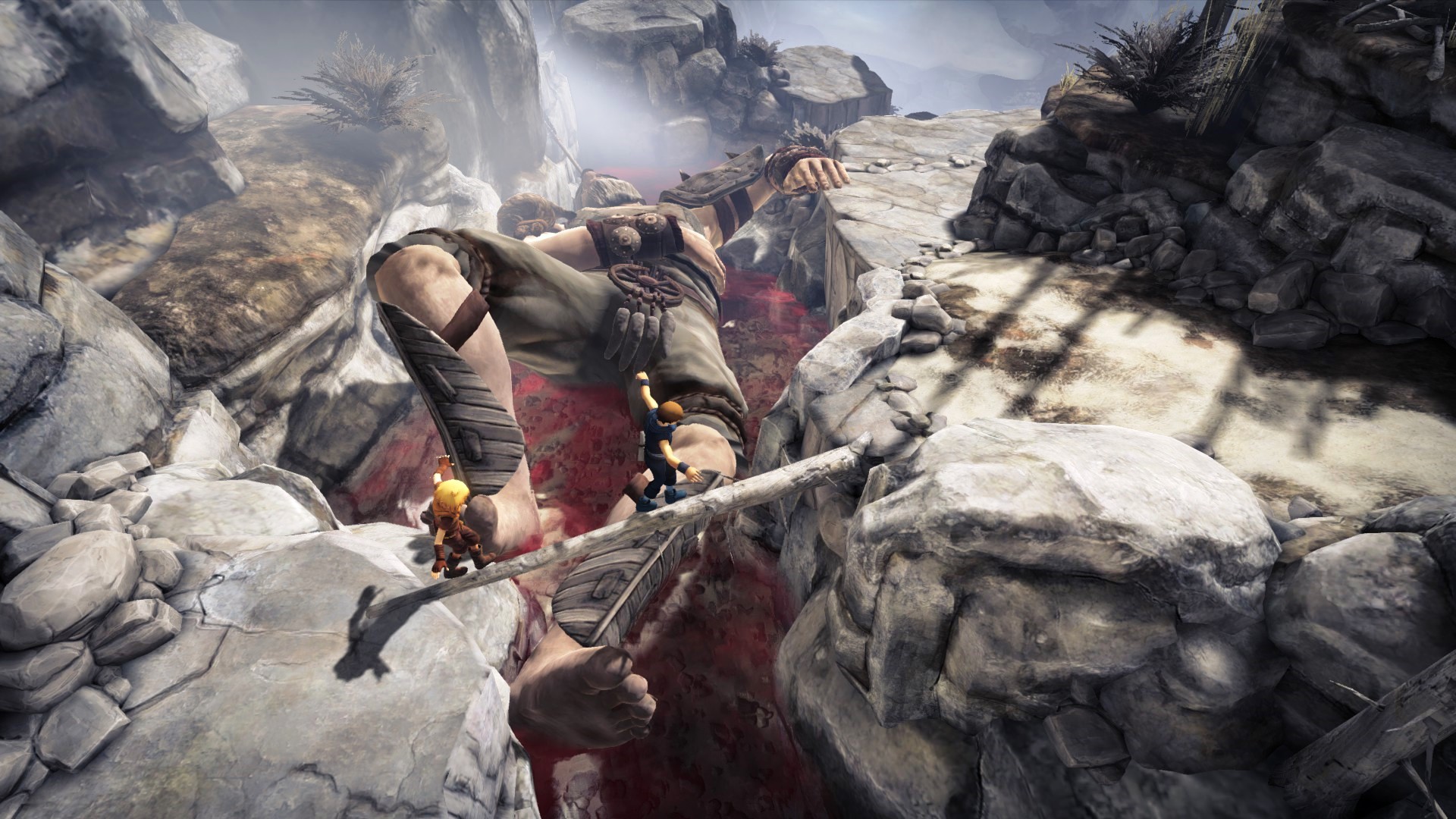
Brothers:
A Tale of Two Sons
(PC, Xbox 360, PS3)
Back when I was in university, I took a class in Children’s Literature (because that’s a thing that exists, apparently, and was a good use of my tuition money). It was actually one of the more memorable classes I can recall, in large part due to it being my introduction to the 1973 novel The Brothers Lionheart by Astrid Lindgren (better known as the author of Pippi Longstocking). I’d never even heard of the book before, but it quickly became one of my favorites. If you haven’t read it, it relates the tale of two brothers, aged nine and thirteen, who die (which shouldn’t be a spoiler since it happens within the first few pages) and go on a journey through the afterlife, which happens to resemble Sweden in the Middle Ages. It’s a highly affecting book, filled with equal parts adventure, mythology, and genuine sadness.
Brothers: A Tale of Two Sons was very clearly inspired by The Brothers Lionheart. The titular brothers, Naiee and Nyaa, are roughly nine and thirteen, and they have a relationship similar to that of Jonatan and Karl, the novel’s protagonists. And while Brothers isn’t an exploration of the afterlife in the same way that Lionheart is, Naiee and Nyaa certainly do go on an odyssey through an often fantastical land, and ultimately are forced to confront mortality.
There are moments in Brothers that blew me away. The giants’ battlefield, for instance, or the flying craft that you borrow from a mad old inventor. Visually, this may be the most beautiful game of the year, and it knows it; from time to time, you’ll encounter benches where you may sit and just take in the vistas. The puzzles are challenging without being too difficult, although many of them require very creative solutions that may not seem obvious at first.
But perhaps the most amazing part of Brothers is its central conceit - played with a gamepad, each brother is simultaneously controlled by the left and the right control stick and corresponding trigger. Thus, you might find yourself trying to climb up a cliff face, both boys grabbing onto handholds and trying to time their leaps, or solving puzzles that require each of them to position themselves and perform an action at the same time.
This is not easy, although it does get easier over time and with practice, and this is entirely the point. Each boy has his own strengths and weaknesses - Naiee, the younger one, is small enough to crawl through small openings but is afraid of the water and can’t swim, while Nyaa, the older one, is strong enough to pull levers and can carry his brother on his back to cross rivers. This sort of dual interaction results in something unexpected as the game passes - you start to bond with each of the boys, try to make sure they don’t fall too far out of step, and make sure that one is there for the other to overcome obstacles. The brilliance of Brothers: A Tale of Two Sons lies in how the relationship between the two brothers develops over the course of the game, and in how this is not told to you through expository sequences but is instead the natural result of how the game is played.
While it never brought me to the same level of devastation as last year’s Walking Dead game, Brothers is by far the most emotional game that I played in 2013. Without giving anything away, there is a late-stage development that changes everything, and how the game plays out after that may be one of the most amazing, subtle and powerful things I’ve ever come across in a game. If you do decide to give Brothers: A Tale of Two Sons a shot, play right to the end. You won’t be disappointed.
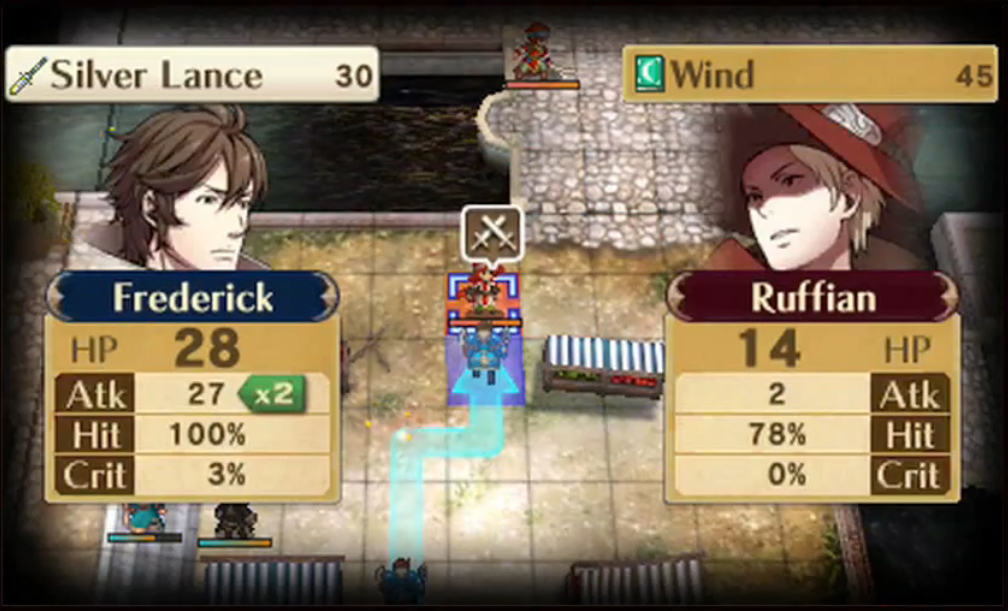
Fire Emblem:
Awakening
(3DS)
On the surface, Fire Emblem: Awakening seems like a very run-of-the-mill tactical RPG, and if I had only played the first few hours of it, I doubt that I would have even recommended it to anyone, let along give it the top spot on my list. It’s not that there was anything wrong with it; it’s just that, by and large, my experience with tactical RPGs has been limited to, well, Final Fantasy Tactics and that’s about it, and it was never a format that really grabbed me.
Fire Emblem: Awakening earns the top spot, first and foremost, because it did something only a few other games that I have played in my life have accomplished: it completely turned my opinion around on an entire genre, and got me interested in exploring what else is out there in the tactical RPG spectrum. For a newcomer like myself, FE:A is a slow burn, and it took me a while to see what all the fuss was about.
So what makes Fire Emblem: Awakening so incredible? In short, the Support System. See, as you play through the game, you will encounter and recruit a fairly large cast of characters, each with their own backstory and set of strengths, weapon preferences and abilities. In the course of a battle, you have the option of pairing these characters off (typically a stronger and more developed character with a weaker one) and this will allow them to bond. As this occurs, the pairs move through a series of ranks, with each one granting certain buffs in future battles, assuming those two are paired up. If they reach the highest level, S-Support rank, they will get married.
Fire Emblem: Awakening, for all of its anime trappings, is not a soap opera or visual novel, and all of this romance actually has a very important in-game function. Besides the aforementioned buffs, there’s a time-travel component cleverly wended through the narrative which allows the adult children of each couple appear and join your party - in some cases, these offspring appear almost immediately after two characters achieve S-Support rank. This brings a generational quality to the game, and a surprising amount of emotional resonance as a young father, for example, struggles with the fact that he has a grown child and attempts to (and eventually, through your own efforts, succeeds at) forming a parental bond with them.
As time passes, family units are formed, certain characters undergo dramatic transformations, and battles are won. And then, something terrible happens: a character that you have invested in, have married off and watched as they interact with their children, falls in battle, and they’re just… gone, forever.
Unlike losing a core character in something like State of Decay (see above), permadeath in FE:A is a truly painful experience. Perhaps it’s because of the difficulty of the game (I lost a handful of characters within the first few hours of playing and was forced to start over from the beginning), or perhaps it’s because of the game’s length, which is substantial - losing even one of your troops will deprive you of later developments. Whatever the reason, the combination of the Support System and the constant, looming possibility of permadeath results a brutal and astoundingly effective emotional experience: I spent hours making tiny adjustments, trying different pairing combinations, learning about each character to determine who would make the most appealing and beneficial fit, only to have a battle go south and lose a key character.
As you can imagine, there’s a lot going on in FE: A, and every single aspect is brilliantly executed. The tactical strategy of the combat sequences is robust and flexible. Each fight involves a short (skippable) animation of that particular fighter and their opponent, offering different camera angles such as POV, side view or cinematic view. The story moves along at a good pace, and is appropriately dramatic where it counts. The art and design are phenomenal. The dialogue is witty, wry and sharp as a tack. The orchestral and choral score soars and swells. Every single aspect of FE: A deserves top marks.
Plus, it’s one of the few 3DS games that I feel has made adequate use of the StreetPass and SpotPass features. Every day, new DLC maps, characters, weapons and so forth were delivered to my game, many of them so fiendishly difficult that I had to save them for weeks until my team was at an appropriately high level. It felt like I was receiving bonuses on a daily basis. And if I encountered other real-world players of FE: A, I would be given the chance to fight them and, if successful, the option of recruiting their leader. In a landscape of games that give only fleeting lip service to StreetPass, I was very impressed by FE: A’s creative and sophisticated use of the technology.
It’s been said that Fire Emblem: Awakening saved the 3DS, as it was the first “must-own” title on the system and was released around the time that the console’s fortunes began to turn around. Whether or not it can be heralded as the sole savior of the 3DS, there’s no question that it deserves to be played by anyone and everyone who appreciates thoughtful, intelligent game design.
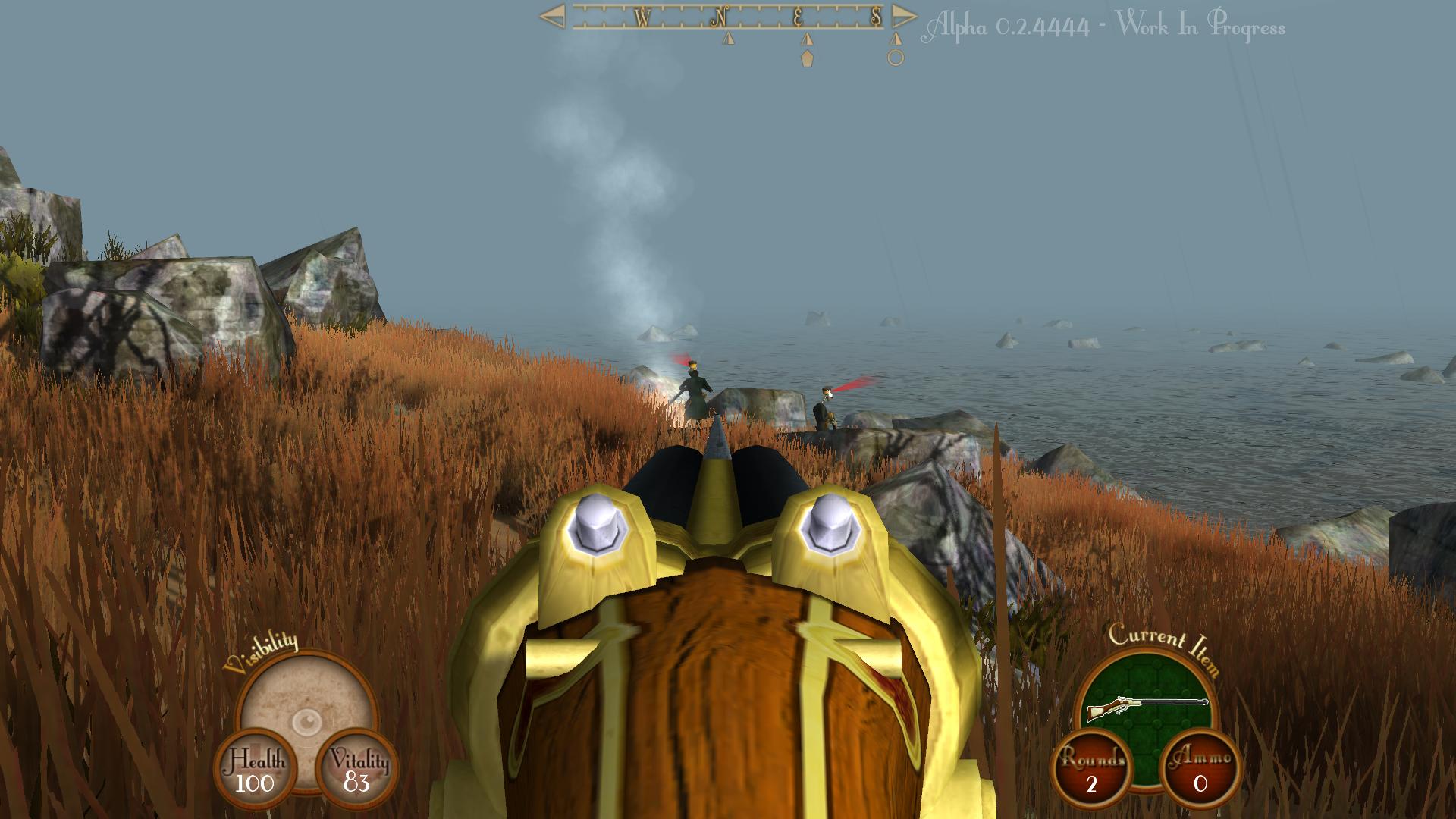
A game where you’re being hunted by steampunk robots? Sold. If this game was out of Alpha, it would have secured a spot on this list without question.
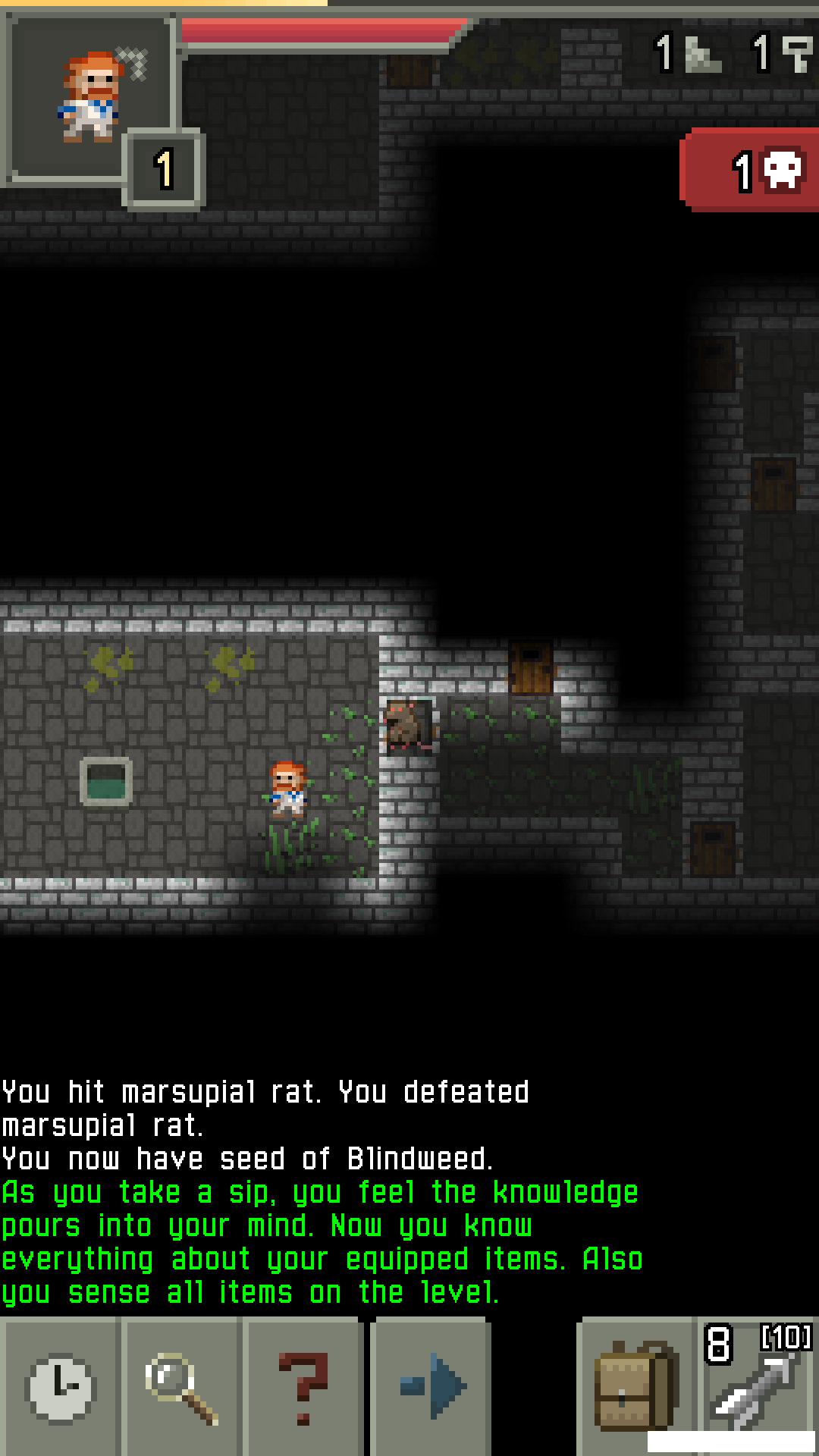
I try to stay away from mobile games on this list, in large part because I just don’t think they can compare to console and PC games. However, I was sorely tempted to include Pixel Dungeon, purely on the basis that I put more hours into this Android roguelike than any other game over the past year. The difficulty level is high and it isn’t without a few minor design flaws, but something about it is just insanely addictive.
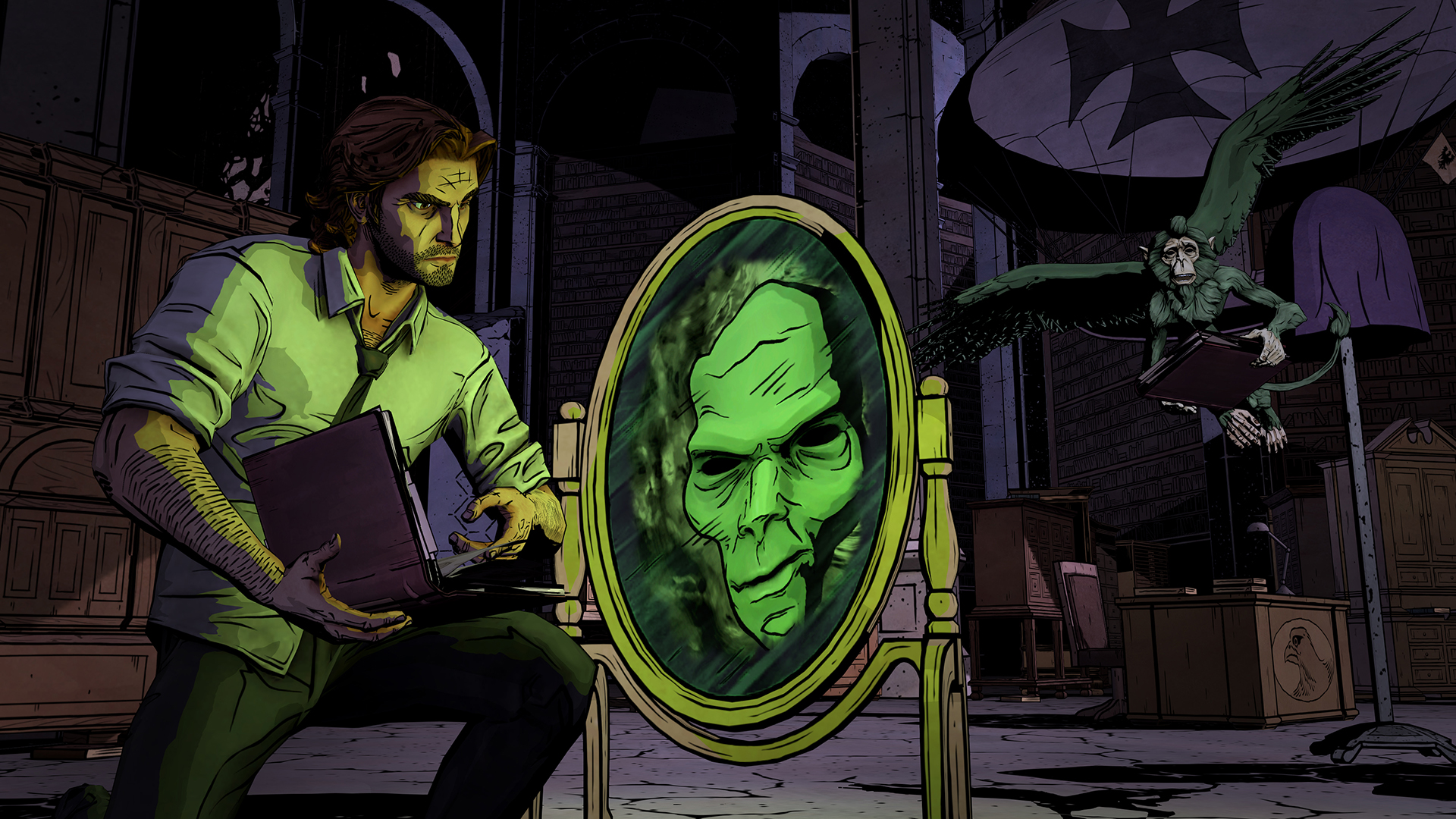
The Walking Dead: 400 Days (PC)
The Walking Dead: Season 2 (PC)
I’m lumping these three Telltale outings together because my reason for not including each one is the same: it’s impossible to say how the game will play out based only on a single introductory chapter. That’s not to say that I don’t have high hopes for both The Wolf Among Us and The Walking Dead: Season 2, and I’ve been very impressed with what I’ve seen of both so far, but by all rights these are contenders for my 2014 list and not this one.
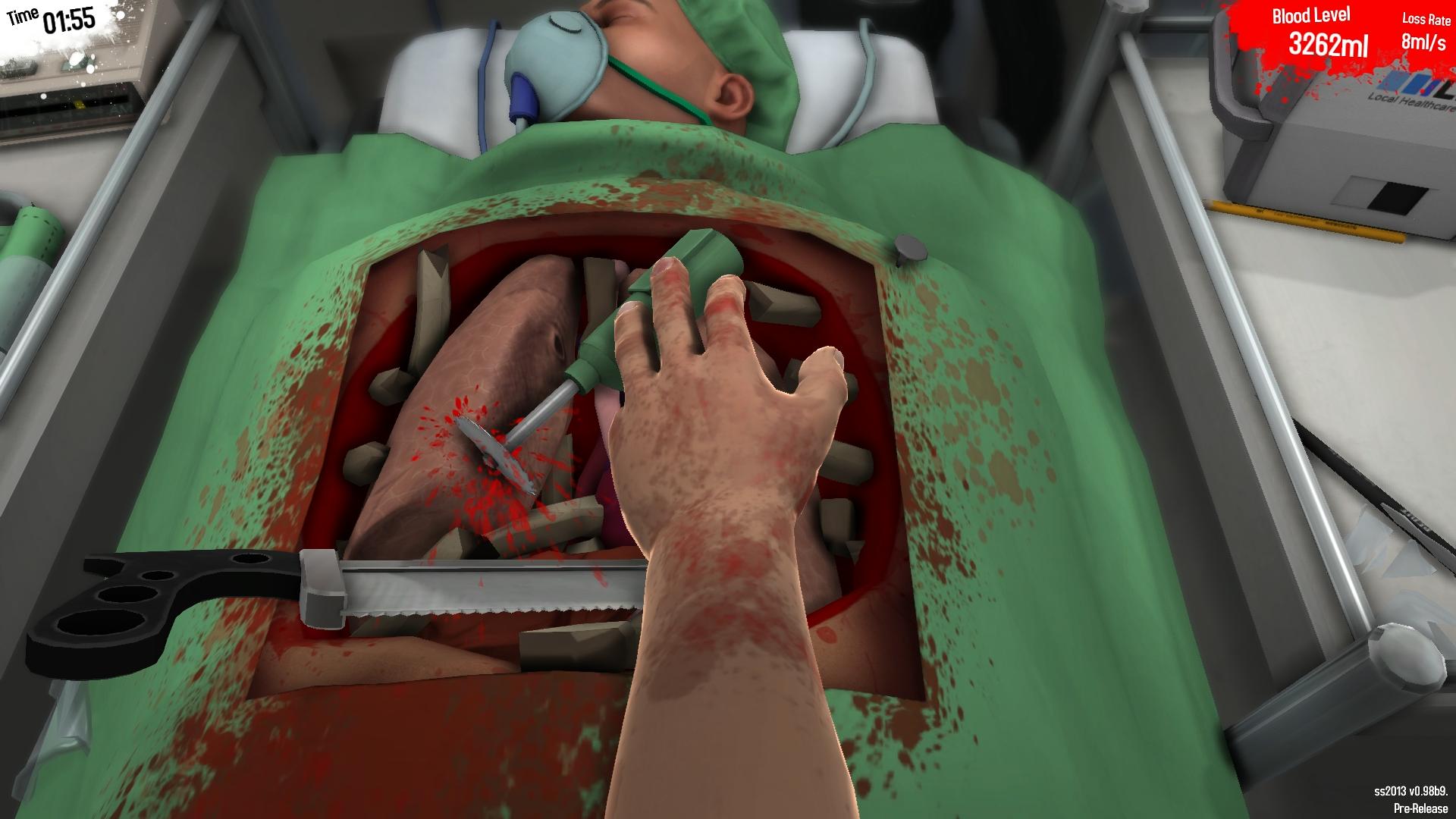
I so badly wanted to include Surgeon Simulator 2013, but I chose not to for two reasons: one, it’s clearly meant as a joke, and two, it’s not so much a game as it is an exercise in hand-eye coordination. Like a more developed QWOP or Octodad, Surgeon Simulator 2013 is certainly one of the more hilarious interactive experiences to come out this year, but it just didn’t fit my criteria.
And that's it for this year! Feel free to disagree in the comments!

No comments:
Post a Comment